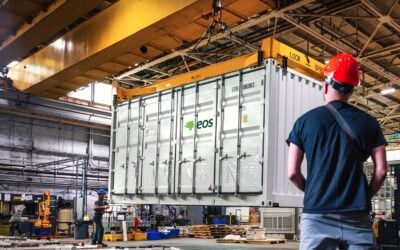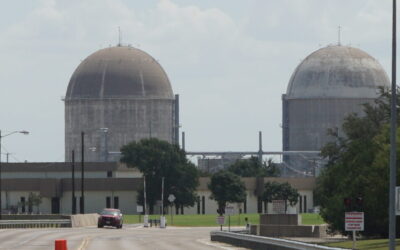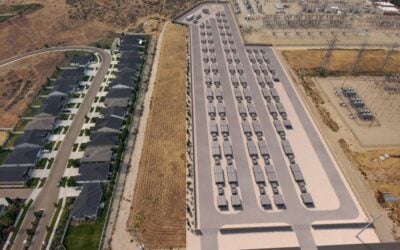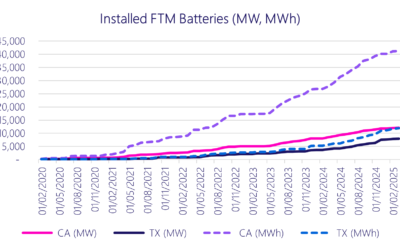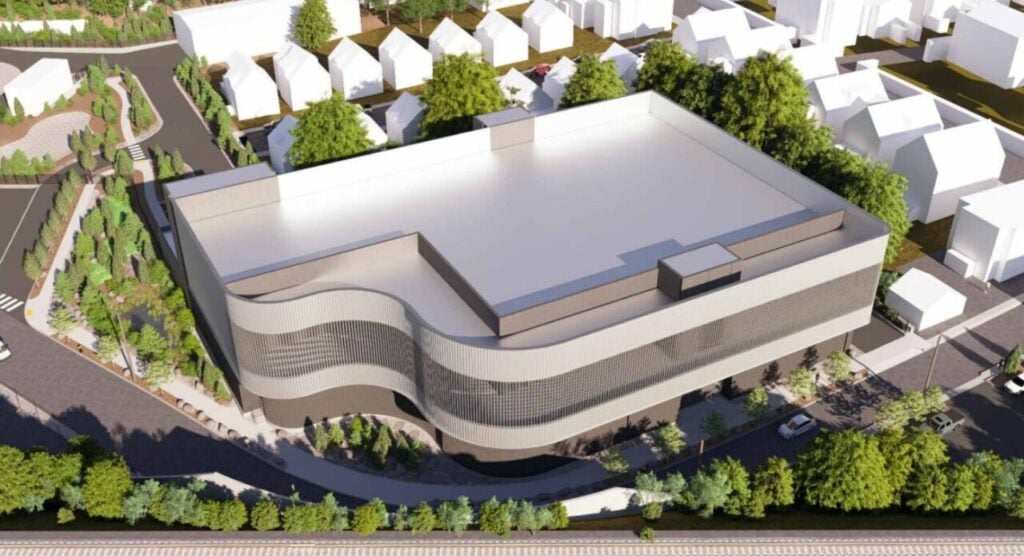
System operator ISO New England has given the go-ahead for a 300MW/1,200MWh indoor BESS located in Boston, Massachusetts under development by developer and IPP Flatiron Energy.
ISO New England approved a proposed plan application associated with the project in the form of a letter published on the system operator’s website on 6 January, 2025.
Enjoy 12 months of exclusive analysis
- Regular insight and analysis of the industry’s biggest developments
- In-depth interviews with the industry’s leading figures
- Annual digital subscription to the PV Tech Power journal
- Discounts on Solar Media’s portfolio of events, in-person and virtual
Flatiron Energy, which was granted B Corporation status in March 2024, is a portfolio company of private equity firm Hull Street Energy specializing in the development of utility-scale battery energy storage across North America.
300MW/1,200MWh added to the ISO New England grid
Flatiron’s Lite Brite Storage project is expected to connect to the ISO New England-operated grid through Eversource Energy’s Electric Avenue substation via a new 0.08-mile 115kV transmission line.
The Colorado-based developer secured an interconnection agreement for the project on 9 August, 2024 (queue number 1148), which was first submitted with ISO New England during July 2021.
According to the recent letter, ISO New England and its Reliability Committee didn’t identify any “significant adverse effects” associated with connecting the project to the grid.
BESS to be located inside new two-storied building
The developer is currently seeking approval to commence construction of the project with Boston’s Planning & Development Agency. In September 2024, design and engineering consultancy VHB submitted a Project Notification Form with the Boston planning agency on behalf of Flatiron.
The submission kick-started the Article 80 Review process, part of Boston’s zoning code, that reviews projects based on their potential impacts to surrounding aspects such as transportation, the environment and historic resources.
According to Flatiron’s application, the project will be located on 35 Electric Avenue within the Boston neighbourhood of Brighton.
Unlike the majority of new BESS facilities, where individual battery cells are located outside utilising a containerised approach, Flatiron is proposing to house the batteries indoors within a new two-storied building (pictured), designed by Boston-based architectural firm RODE.
BESS located amongst a “dense urban feel”
Although the Massachusetts Fire Code allows for externally located BESS facilities, the location for Flatiron’s Lite Brite storage project falls within the neighbourhood of Brighton, described by the developer as having a “dense urban feel”. As outlined in Flatiron’s recent application, the specific project site has small-to-medium sized houses to the south and west, along with a housing complex to the east.
As regular readers of Energy-Storage.news will be aware, there have been several recent examples of communities speaking up against BESS facilities proposed for residential areas, with some law-makers banning new battery projects within their neighbourhoods altogether.
During October last year, the Town of Carmel in New York amended its zoning laws effectively banning the installation of all new utility-scale storage facilities. The new ruling, which bans all BESS facilities larger than 0.6MWh, followed a temporary 6-month moratorium that was passed earlier in the year, after concerns were raised surrounding the potential for battery fires.
Although some lawmakers prefer indoor BESS facilities, other stakeholders argue it isn’t as safe as using a containerised approach. As reported by Energy-Storage.news in September last year, officials at Moorpark City Council in California turned down a 2.4GWh BESS proposal from Chicago, Illinois-headquartered IPP Hecate Energy for not housing battery containers indoors.
Hecate argued that an indoor approach was no longer in line with industry “best practice”, with the lack of spacing between batteries introducing cooling and access issues. Flatiron will be hoping that its indoor approach, which includes a dedicated fire pump room downstairs, will be looked favourably upon by Boston decisionmakers.
Construction is expected to take up to a year with commercial operations scheduled for 2028.
Project acquired from Hecate Energy
Initial development of the Lite Brite project commenced in 2019 by Chicago, Illinois-headquartered developer Hecate Energy, which then sold the project to current owner Flatiron Energy during August 2023.
According to business entity filings submitted with the Massachusetts secretary’s office, the company subsidiary associated with the project was changed from “Hecate Energy Electric Ave Energy Center, LLC” to “Lite Brite Storage, LLC” on 27 August, 2024.
1GWh of storage capacity by year-end
In August 2018, former Governor of Massachusetts, Charlie Baker, signed the “An Act to Advance Clean Energy” into law, establishing a 1,000MWh energy storage deployment target by 31 December, 2025.
The act requires all electric distribution companies (EDCs) to report annually on energy storage deployment within their territories no later than February 15 each year. It was reported last year that Massachusetts had a cumulative storage capacity of 569MWh, with an additional 8,806 MWh in the development pipeline.
Plus Power’s 150MW/300MWh Cranberry Point BESS located in the Town of Carver is expected to make up a large proportion of the 1GWh total, with commercial operations scheduled for summer this year.

